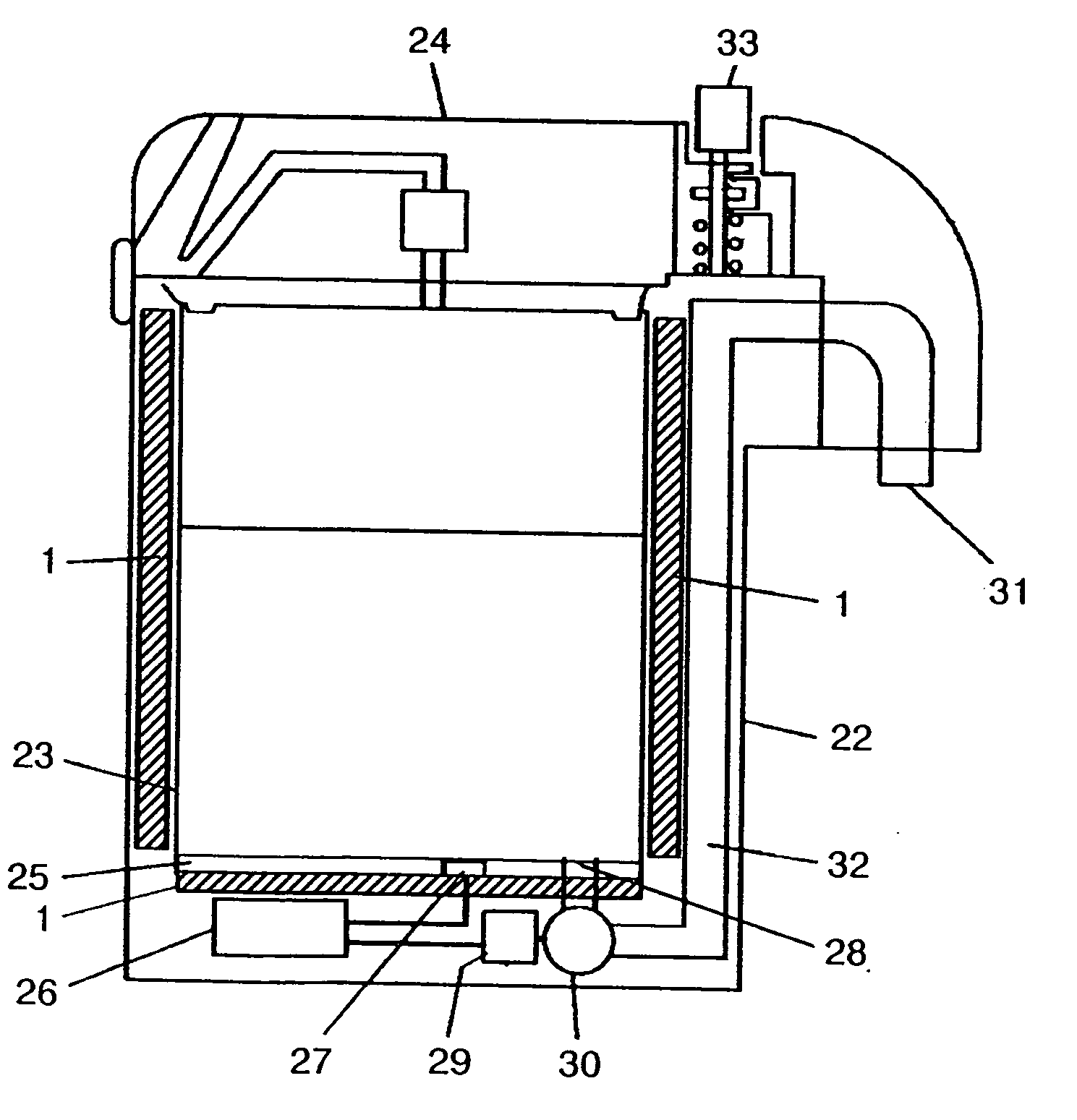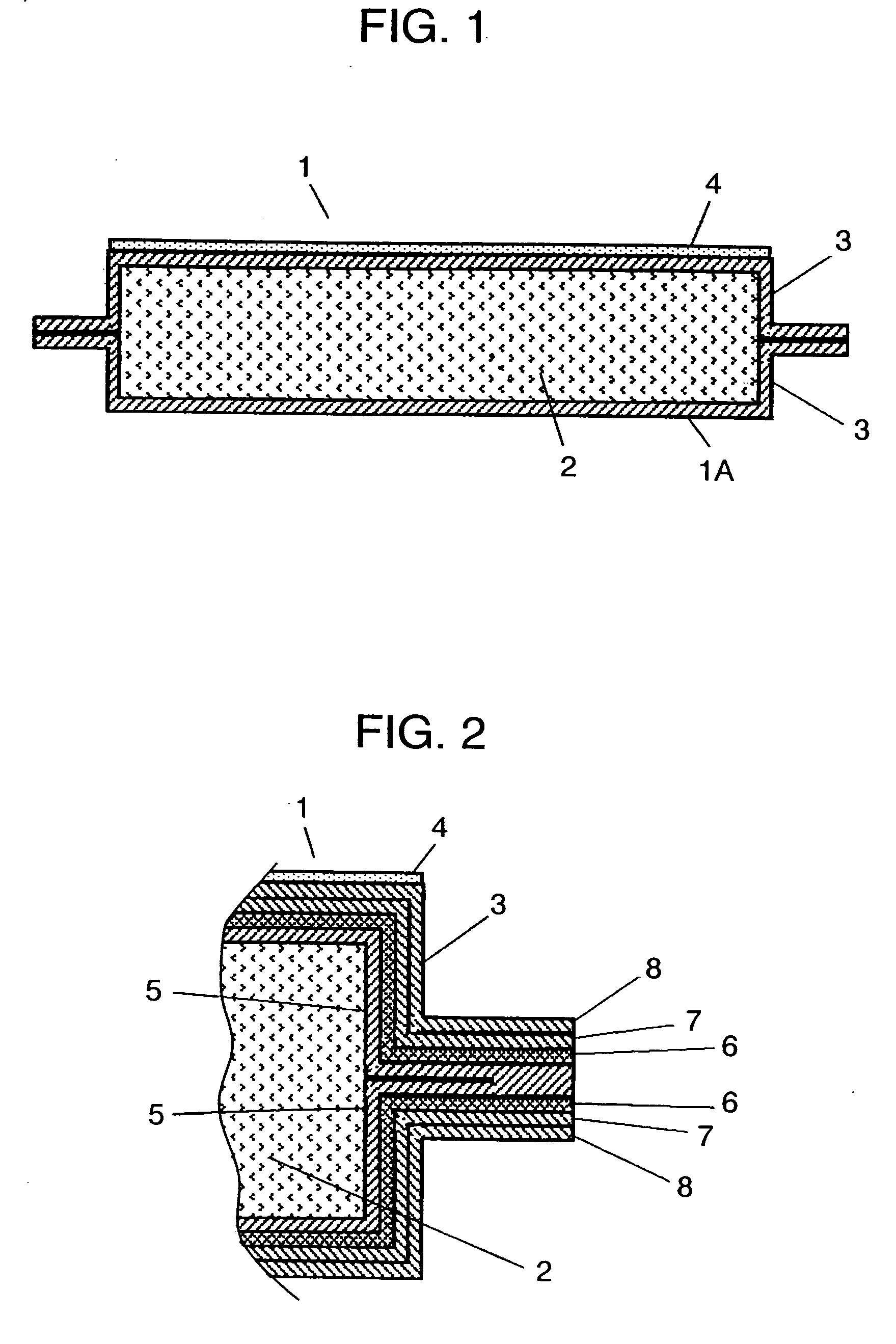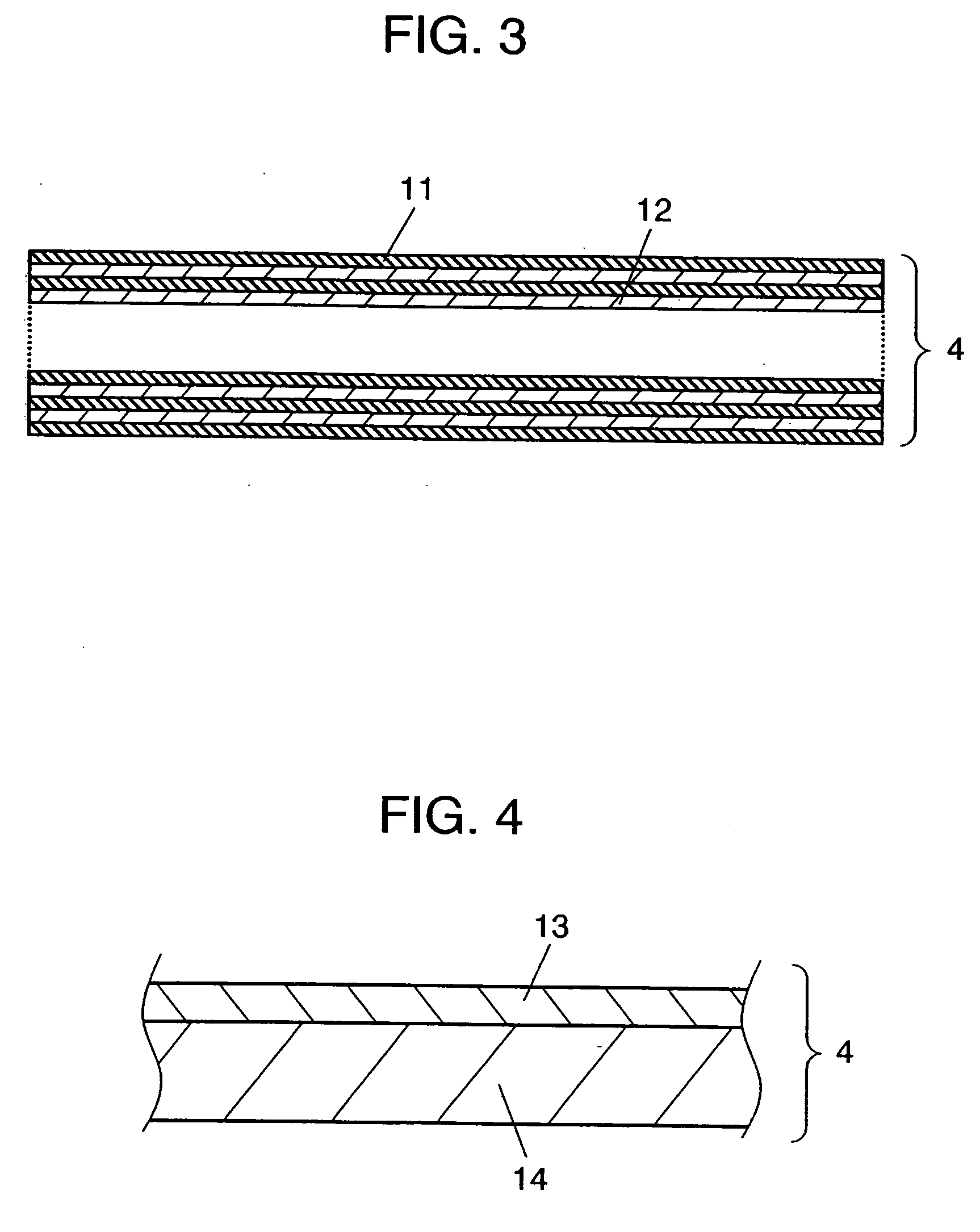Vacuum thermal insulation material and equipment using the same
a technology of thermal applied in the field of vacuum heat insulation material and equipment, can solve the problems that the structure of these conventional techniques cannot address these problems sufficiently, and achieve the effect of improving heat insulation performan
- Summary
- Abstract
- Description
- Claims
- Application Information
AI Technical Summary
Benefits of technology
Problems solved by technology
Method used
Image
Examples
first exemplary embodiment
[0026] First, a description is provided of a case in which a coating including an infrared reflectance component is formed as radiation heat transfer suppressor 4. For samples 1 through 4, various kinds of coatings are formed on the surface of enveloping member 3 of vacuum heat insulator body 1A as radiation heat transfer suppressor 4. The heat-insulating performance of vacuum heat insulator 1 is evaluated by measuring the surface temperature on the low-temperature side when a heat at 150° C. is applied to the surface on the high-temperature side.
[0027] Formed in sample 1 is a coating containing leafing aluminum flake pigment, i.e. a metal powder, as an infrared reflectance component and epoxy resin as a resin component. Formed in sample 2 is a coating containing leafing aluminum flake pigment, similar to sample 1, and polychlorotrifluoroethylene, i.e. a fluorocarbon resin, as a resin component. Formed in sample 3 is a coating containing silicon nitride, i.e. an inorganic powder, a...
second exemplary embodiment
[0038] Next, a description is provided of radiation heat transfer suppressor 4 formed of a laminate of inorganic material films having different reflectances. The basic structure of the vacuum heat insulator is similar to those of FIGS. 1 and 2 in accordance with the first exemplary embodiment.
[0039]FIG. 3 is a sectional view of radiation heat transfer suppressor 4 in accordance with this embodiment. Radiation heat conduction suppressor 4 of this embodiment is a radiation heat suppressing film in which first inorganic film 11 made of magnesium fluoride and second inorganic film 12 made of calcium fluoride and having a different reflectance are alternately laminated in four layers.
[0040] When inorganic material films having different reflectances are alternately laminated in a thickness of the quarter of a specific wavelength, fronts of the waves reflected from the boundary surfaces of respective layers overlap additively. This allows the wavelength of far infrared rays to selectiv...
third exemplary embodiment
[0046] Next, a description is provided of a case in which radiation heat transfer suppressor 4 is formed of a metal film. The basic structure of the vacuum heat insulator is similar to those of FIGS. 1 and 2 in accordance with the first exemplary embodiment.
[0047] In this embodiment, a metal film forming radiation heat transfer suppressor 4 is made of a metal foil or laminating them. Alternatively, as shown in the sectional view of FIG. 4, the metal film can be made of a thin layer of metal film 13 formed by deposition, sputtering, or electrode position method, or a laminate thereof. The metal film can also be made by laminating a metal film with thin layers of inorganic materials or semiconductors.
[0048]FIG. 5 is a characteristics diagram showing a relation between black body emissivity and wavelengths at 150° C. FIG. 6 is a characteristics diagram showing reflectance when light is perpendicularly incident on a silver (Ag)-deposited surface.
[0049] When a heat at 150° C. is appli...
PUM
| Property | Measurement | Unit |
|---|---|---|
| melting point | aaaaa | aaaaa |
| melting points | aaaaa | aaaaa |
| temperature | aaaaa | aaaaa |
Abstract
Description
Claims
Application Information
 Login to View More
Login to View More - R&D
- Intellectual Property
- Life Sciences
- Materials
- Tech Scout
- Unparalleled Data Quality
- Higher Quality Content
- 60% Fewer Hallucinations
Browse by: Latest US Patents, China's latest patents, Technical Efficacy Thesaurus, Application Domain, Technology Topic, Popular Technical Reports.
© 2025 PatSnap. All rights reserved.Legal|Privacy policy|Modern Slavery Act Transparency Statement|Sitemap|About US| Contact US: help@patsnap.com



